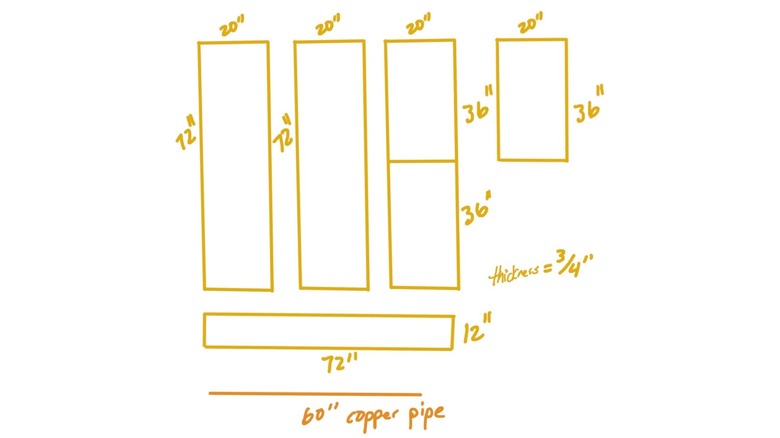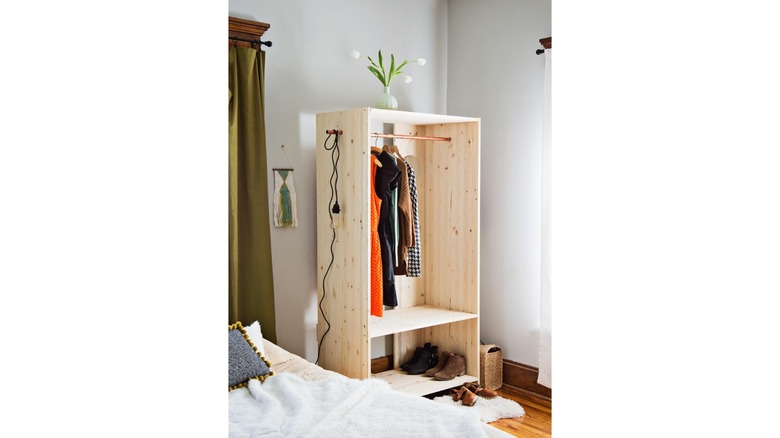No Closet Space In Your Home? Here's How To DIY A Chic Minimalist Wardrobe
Living in a small home is like solving a series of daily puzzles, except the puzzle pieces are you and the things you own. Maximizing storage in a small space is crucial, but when there are no closets to help with that, it gets harder to make the pieces of the puzzle fit. One solution to this closet-less existence is to build a custom wardrobe big enough to hold this season's clothing but not so big that it dominates the space.
This clean, minimalist DIY project checks all the right boxes. The base and the interior shelf create a space for shoes or foldable items like blankets and sweaters, while the sturdy bar and open design allow for hanging and seeing your garments more easily. Some measuring and drilling are required, but the overall build is simple and leaves room for upgrades and modifications should your storage needs change.
Materials and tools for building a DIY wardrobe
The step-by-step plans for this wardrobe come from A Beautiful Mess builder, Rachel Denbow. To build one yourself, you'll need six pieces of three-quarter inch pine: two side panels that are 20-inches wide by 72-inches long, three pieces for top, bottom, and middle that are 20-inches wide by 36-inches long, and one back panel that is 12-inches wide by 72-inches long. Pine is a good choice because of its durability and availability, and light wood furniture works well with minimalist interiors. You'll also need a 60-inch-long three-quarter-inch copper pipe and 25 two-inch wood screws.
As for tools, you will need a circular saw to cut the wood yourself, or your local hardware store can do it for you. You will also need a drill with a set of drill bits, a sander or sheets of sandpaper, a Phillips screwdriver, something to measure straight lines with, and a pen or pencil. Hooks and other hardware are optional, as is the mirror that Denbow attached to the inside of her wardrobe's back panel using Gorilla Glue.
Making the wardrobe work for your space and aesthetic
You can choose to leave the wardrobe exactly as the instructions describe to achieve that clean, minimalist look, or you can customize the piece in a way that better suits your aesthetic and practical needs. A gel-based wood stain is an easy, beginner-friendly alternative to painting that still produces beautiful results. You can also modify the design so that the middle shelf sits atop pegs instead of being nailed to the sides. That way, the position of the shelf can be adjusted up or down as the seasons change and your clothing gets longer or shorter. Jewelry wearers can add hooks or short pegs for hanging necklaces and rings, plant parents can install a DIY propagation station, and those who don't love the idea of always seeing inside can screw in eyehooks on either side to hang a simple fabric curtain. The possibilities are virtually endless when you start with such a versatile base.


